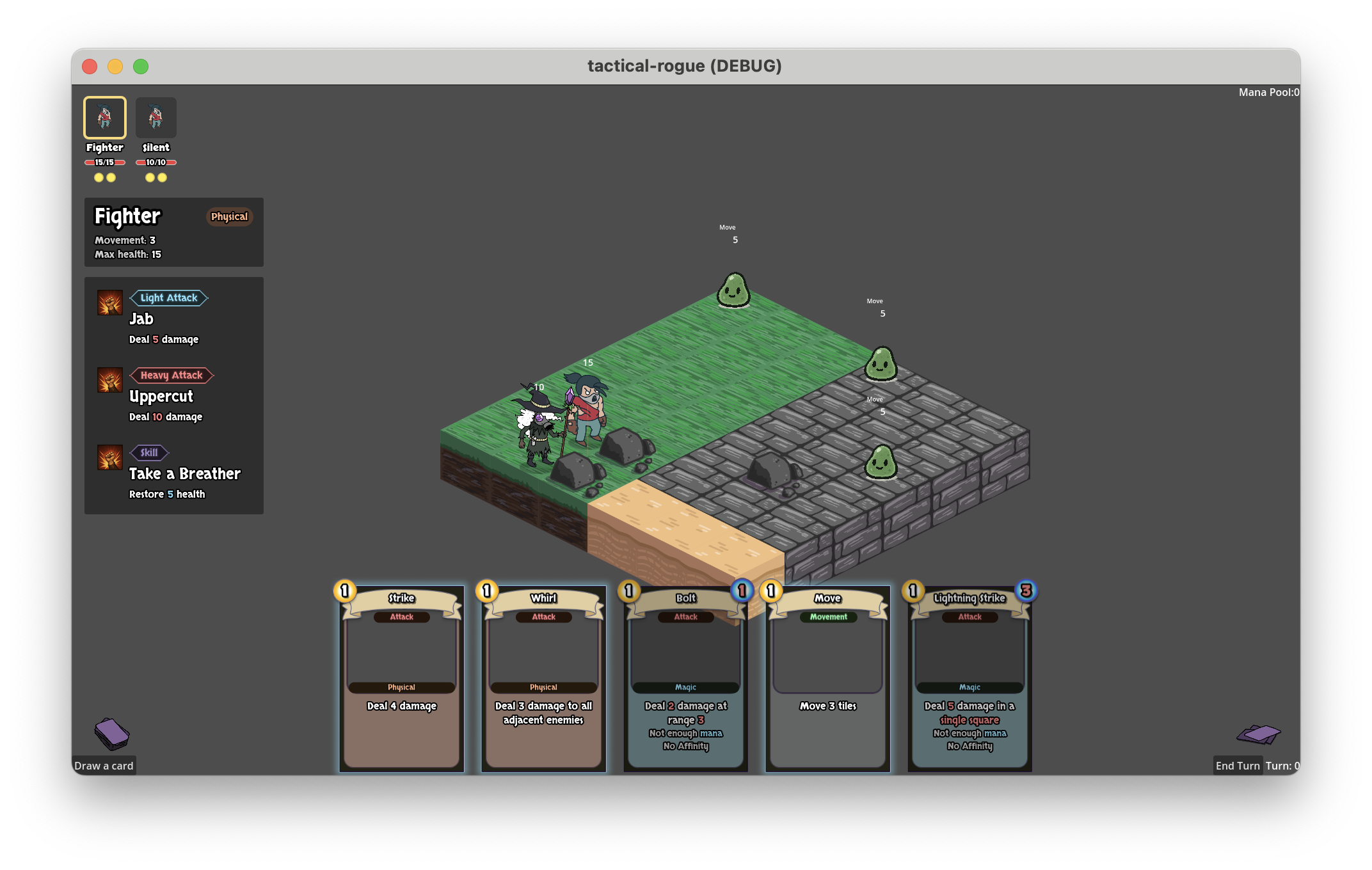We’re getting closer to our very first alpha build, which will include our core tactics, deck-building, and character progression systems. There’s a lot that goes into it, so this week we’ve been brainstorming mechanics and ideas to make the game as fun and replayable as possible. Rads and Relics pulls from a number of different traditions—tactics games, RPGs, card games, and deckbuilders—so there’s a lot of space for us to explore.
A small disclaimer: we’re still very early in our ideation stage, so there’s no guarantee that all (or even most) of these ideas will make it into the final game. But, we wanted to give an inside look at how we’re designing the game.
Tactical Ideas
I’ve played a lot of tactics games, and one of the things that I’ve always enjoyed is the idea of terrain manipulation: how can you change the map to be more advantageous to you. In the context of Rads and Relics, we’re thinking about this in several ways. The most basic is adding/destroying obstacles to open up new avenues of attack. But we also want to try some more experimental ideas, such as portals to connect different parts of the map, or zones that apply different effects, like a “slow field” that halves movement speed within its area.
Speaking of slowing things down, we’re also looking into the idea of temporal manipulation. Imagine a card that lets you move your character back to the space where they started last turn. Or maybe a card that forces the enemy to repeat their last action.
Related to the enemies, we’re thinking about how the player can interact with the enemy AI and actions. Similar to games like Into the Breach or Slay the Spire, we want to show you what enemies are planning, but we also want to let you manipulate those plans. Maybe you have a card that causes an enemy to target a different ally, or cancel their attack entirely. Or maybe you can “jam” an enemy, forcing them to waste their turn in confusion.
Characters, Relics, and Items, Oh My
We want to give you lots of ways to evolve and customize your characters over time. One direction we’re exploring is permanent modifications; thematically, this might look like cybernetic body mods or mutant evolutions.
Another system we’re looking at involves items and relics. Items could be equipable gear that changes how a character plays and can be swapped between runs, while relics might be more permanent, run-defining upgrades. We’re still not entirely sure if we need both systems, or even what the difference is, but we’re going to play and see what sticks.
Cards and Combos
Cards are a great design space because they’re discrete resources—you can copy them, manipulate your deck order, draw extra cards, or even retrieve cards you’ve already played.
At the campaign level, we’re thinking about a system where you can merge cards together. Imagine fusing two weaker cards into one powerful card—but at a higher energy cost, or with some other trade-off. For example, you could combine a basic “Move” card and a basic “Attack” card into a new “Charge” card that lets you sprint into an enemy for bonus damage—but it might cost more energy to play.
It’s been exciting seeing the game come to life, and we’re looking forward to getting the opportunity to build out these systems and finding out what actually resonates with players.
State of the Game
- Progress this week
- Refined first battle experience
- Added more static objects and variety to map generation
- Added Status Effect system
- Upcoming
- Build enemies remaining non-boss battles
- Add enough cards to support an entire run
